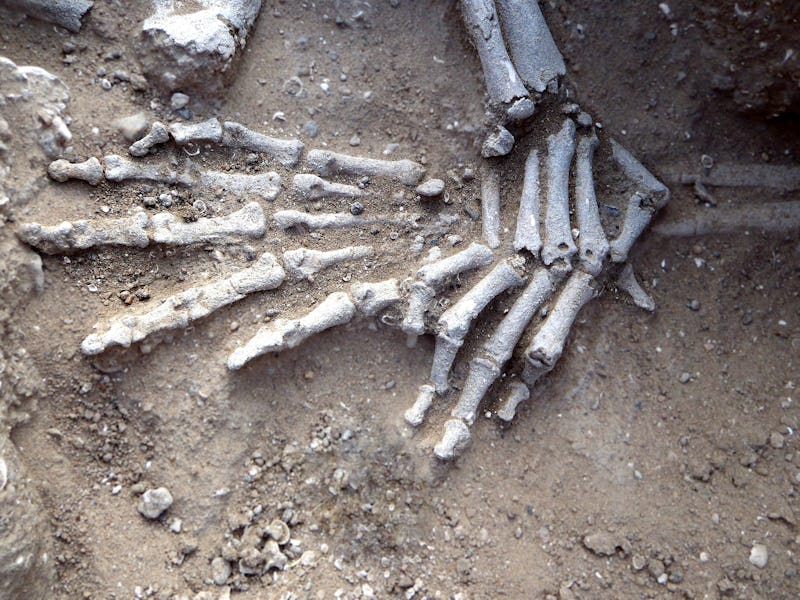Ancient Massacre May Reveal Early Warfare
A prehistoric scene demonstrating brutally slain people could be a glimpse of how our ancestors went to war.

Scientists studying the scene of a 10,000-year-old mass killing may have found the earliest proof of human warfare, the journal Nature reported Wednesday.
The killing ground was once the shore of a lagoon in Kenya, off of Lake Turkana, at a place called Nataruk. Twelve complete skeletons and 15 partial remains were found, with most clearly victims of violent, human attacks.
Bodies were found with embedded arrow or spear points, others with slashes, some had crushed skulls. The wounds showed no signs of healing, indicating the injuries were the cause of death. Some were positioned in a way to imply that they were bound before being slayed.
There’s no way to completely understand why this took place, but some researchers speculate that this may be a battlefield, where hunter-gatherers from the late Pleistocene/early Holocene period fought to the death.
Researchers have yet to decipher how the act of war evolved—although even chimpanzees are capable of intentional, warlike attacks—so it could simply be a part of our primate nature. It also may have been a raid for resources—be it for food, women, or children—the latter suggested as the scene is lacking in the remains of older boys and girls (although there was evidence of children under the age of six, with only one possibly teenaged subject revealed. A woman’s skeleton was also found bearing a 6-9 month-old fetus, her death appearing caused by a blow to the head.
However, the question of whether or not this was true warfare remains unanswered. Douglas P. Fry, a professor of anthropology at the University of Alabama, emailed the New York Times with his take—noting that without evidence of “fortifications, villages built in defensible locations, specialized weapons of war, artistic or symbol depictions of war—as well as other similar sites—he would not yet call this scene one born of war.
The authors of the Nature article did point out the presence of pottery, which could mean the slain group was using the space as a regular location, rather than just a foraging point—leaning toward the aforementioned possibility that this was an attack for resources. The journal also states that this could be “a standard antagonistic response to an encounter between two social groups.”
Dr. Marta Mirazón Lahr, archeologist at the University of Cambridge in the UK was the lead of the expedition, and she told Discover Magazine that “The injuries suffered by the people of Nataruk, men and women, pregnant or not, young and old, shock for their mercilessness…What we see at the prehistoric site of Nataruk is no different from the fights, wars and conquests that shaped so much of our history, and indeed, sadly continue to shape our lives.”